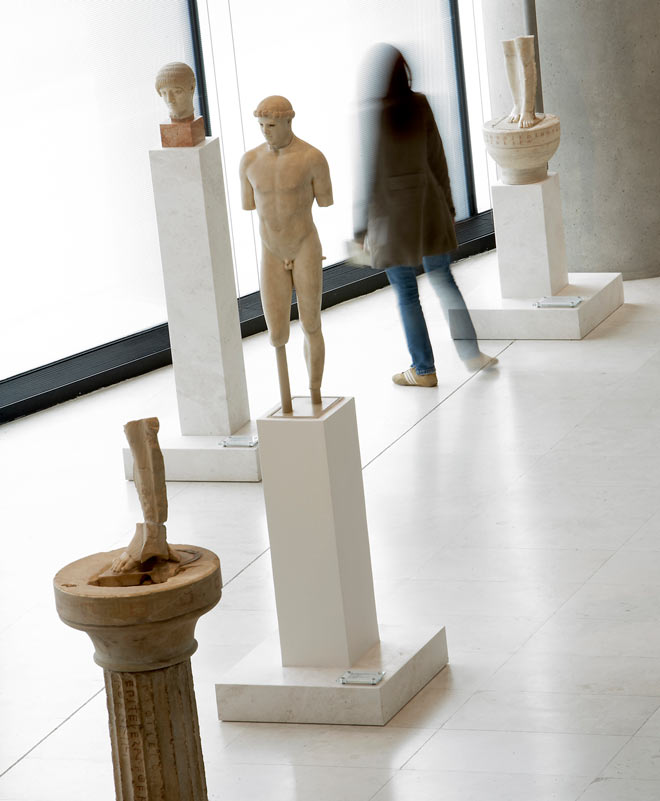THEMATIC SECTION
Dedications of the early Classical period (480-450 BC)
The aftermath of the Persian Wars brought about changes in the society, thought and art of ancient Athens. After 480 BC, artists began looking for fresh ways of expressing themselves that could convey the heroic spirit that prevailed. The new works depicted not only gods but also mortals, particularly athletes.
Sculptors studied the language of the human body and tried to depict the inner workings of the human mind. In contrast to the rigid torso of previous Archaic statues, they produced a more naturalistic posture. They portrayed a shift of body weight onto one leg, which thus transferred and distributed movement to other parts of the body. In this way, they instilled more life, energy and plasticity in their creations.
In addition, numerous decorative elements characteristic of Archaic art faded away. Women's light Ionian clothing gave way to the solemn peplos, a heavier garment that hid the shape of the body. This new sculptural approach is conventionally called the "Severe Style", as human faces now lost their Archaic smile, adopting instead a serious expression. The "Severe Style" lasted until 450 BC, and is considered the precursor to the high art of the Classical era.










